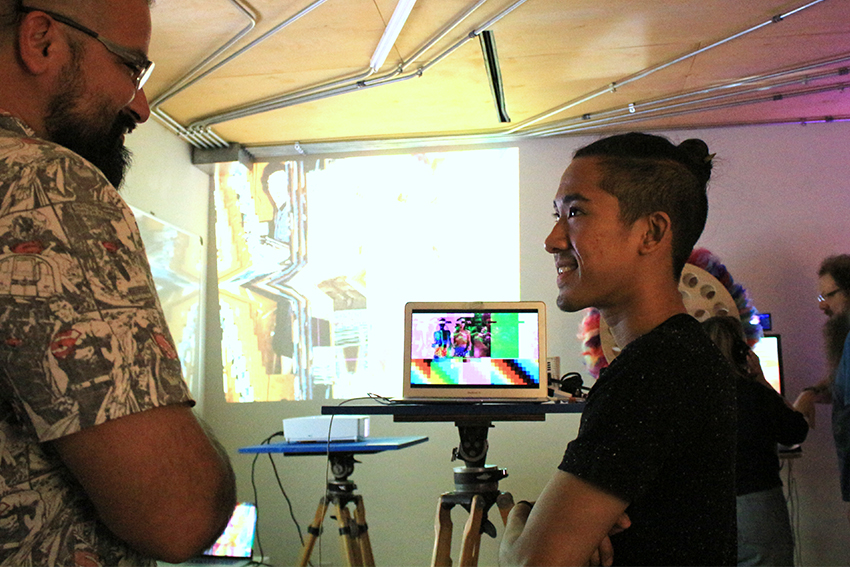When a TV signal “glitches,” the signal is lost; playoffs game could be missed, cartoons become morphed versions of themselves, and entertainment is ruined. To Austin-based technology and art school dadageek, glitching is not a frustration but rather a source of inspiration.
Glitch art is a medium where glitches in any type of digital media are turned into a creative piece. For Jerome Martinez, a UT computer science and linguistics alumnus, dadageek gives him the opportunity to teach in a field he never expected to. Martinez’s class teaches glitch art through the free coding software, Processing.
Even though Martinez said he originally wanted to work a regular tech job, he always felt an interest in art. One of dadageek’s co-founders, Lisa B. Woods, said she recognized this passion and his work in coding, and decided to hire him.
“He was a software developer and really interested in art,” Woods said. “I knew he knew Processing, so I asked if he wanted to teach.”
Woods said Martinez’s computer science background influences his teaching style and is useful for the programming aspect, but he simplifies it enough for beginners. For Krisite Bocanegna, one of Martinez’s students, his teaching style helped her learn and love both coding and the art style
“It’s very collaborative,” Bocanegna said. “He’s our instructor, but we all learn off of each other because we are all from different backgrounds.”
Bocanegna said the class can be intimidating because of the experience level of some students, but the curriculum is based on creativity rather than skill level. For someone who has worked on the professional side of the art industry, Rachelle Diaz, freelance graphic designer and visual artist, glitch art has been a source
of inspiration.
“I got into glitch art because I was following a Tumblr about nine or 10 years ago called Glitch News,” Diaz said. “This blog would take screen grabs of the news that were inadvertently glitched out through TV signals, and I was fascinated by that, and I think other artists are inspired by it too.”
Both Diaz and Woods believe that glitch art can have a plethora of applications in many industries. Diaz said she could see glitch art used ads or in graphic design, and she already sees companies doing this. Woods said that she can see glitch art being a part of fabrics for clothing or furniture.
Diaz said glitching appeals to her because modern devices don’t make static when disrupted. Instead, they distort and break, making a glitch.
“I can see it as a style that will continue as we develop technology through our time,” Diaz said.
For Martinez, the connection between art and technology is an important one, and teaching in subjects he loved was a life changing experience he would definitely consider doing again. Martinez said he may return in the future to UT to teach creative coding at the collegiate level. As for his glitch art, he is still new to the art style as a medium and has not published any of his own art.
“I think everyone has a life journey and I’m still finding out if this is for me, but I really do enjoy it,” Martinez said.















